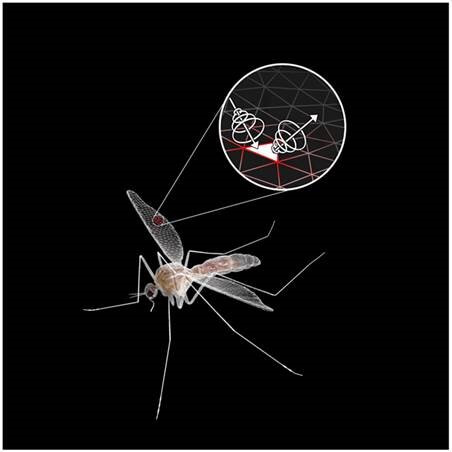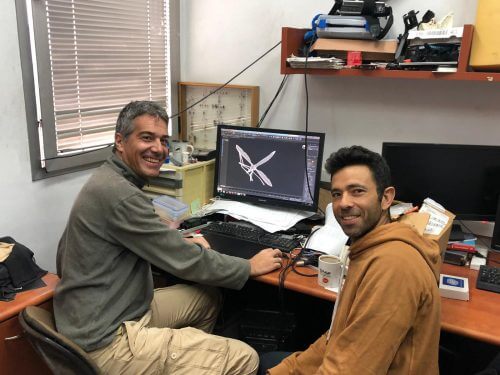The findings revealed by researchers at Tel Aviv University may shed light on the development of the sonar sense in bats tens of millions of years ago, and help in the development of defensive and offensive technologies for swarms of drones for future security use * The article was published this weekend in the journal PLOS Computational Biology

Researchers at Tel Aviv University, led by Prof. Yossi Yuval and Dr. Ariane Bonman from the School of Zoology and the Sagol School of Neuroscience, have revealed new findings about how bats use their natural sonar to identify and hunt swarms of insects. The findings may shed light on the development of the sonar sense in bats tens of millions of years ago, and help in the development of defensive and offensive technologies for swarms of drones for future security use.
The article will be published this weekend in the journal PLOS Computational Biology.
"Most bats hunt insects, and use their natural sonar for this purpose: they emit sound waves, and the echo returned from the insect allows them to discover and locate it," explains Prof. Yuval. "To date, many studies have been conducted on the echoes returned from individual insects, but not on insect swarms where hundreds and sometimes thousands of individuals gather together. In our research, we used a new technology based on XNUMXD acoustic simulation, to examine for the first time the echoes returned to the bat from insect swarms."
The researchers developed an algorithm that allowed them to create XNUMXD acoustic simulations of insect swarms on a computer, and measure the echo returned from the swarm, while changing the number of insects in the swarm and the distances between the insects. In addition, to verify their findings, the researchers recorded echoes returned from swarms in the wild and samples of insects in the laboratory.
"The first finding, which is not surprising, is that a swarm can be detected from a much greater distance than a single insect," says Prof. Yuval. "However, we were surprised to find that for some swarm, the echo is actually weakened from certain directions, even compared to the echo reflected from a single insect. The explanation for this lies in the phenomenon of destructive interference - when sound waves with opposite amplitudes meet and cancel each other out."

"Our findings shed light on a number of interesting issues," concludes Prof. Yuval. "First, they may give us new insights into the early evolution of sonar: it is possible that the early bats, 50 million years ago, which were equipped with a relatively primitive sonar unable to detect individual insects, were able to find food by locating whole swarms. Secondly, the findings explain the presence of tiny insects in the beaks of contemporary bats, even when it is clear that their size does not allow the detection of a single insect by the sonar. And thirdly, they provide a new explanation for a known fact - that bats transmit sound waves at a variety of different frequencies: this feature may be intended to prevent the phenomenon of interference, which could weaken the signal returned from swarms of insects." Dr. Bonman adds that the algorithms developed for the research may also be suitable for swarms of drones used for security purposes, and assist in the development of applications to detect enemy drones, or alternatively to hide 'our' drones from the enemy's radars.

One response
I wonder how the world looks and feels when you close your eyes and flood the space around you with sonar waves.. Is it possible that a three-dimensional image is created in black and white?